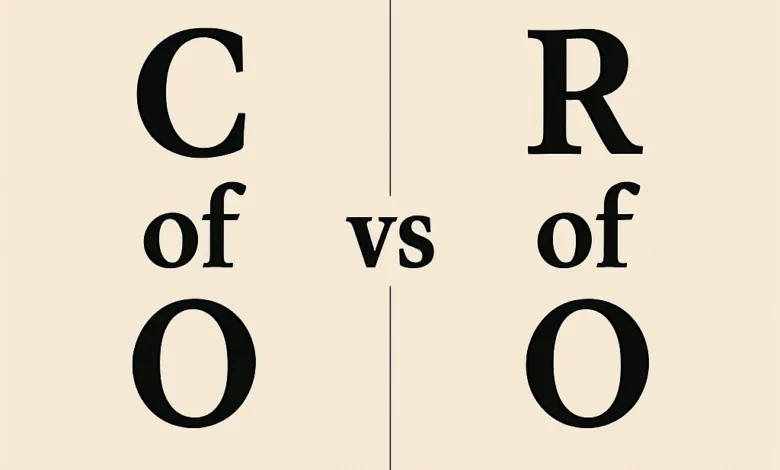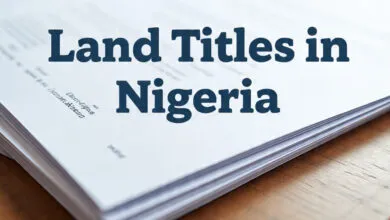C of O vs R of O in Nigeria: What’s the Real Difference?

C of O vs R of O is one of the most important topics in Nigerian real estate. These two land titles, the Certificate of Occupancy (C of O) and the Right of Occupancy (R of O), often cause confusion among buyers, investors, and even agents. Understanding the difference between them is essential if you’re planning to buy land, invest in property, or simply want to know how land tenure works in Nigeria.
This article will break down both documents in plain terms, explain their legal backing, and help you understand how they apply depending on the state, location, and land type.
Legal Framework Behind C of O vs R of O
Both the C of O and R of O derive their legitimacy from the Land Use Act of 1978. This Act vests all land in each state under the control of the State Governor, who holds the land in trust for the people.
Here’s what this means:
- The Governor can issue a Statutory Right of Occupancy (R of O) or a Certificate of Occupancy (C of O).
- The Local Government Chairman can issue a Customary Right of Occupancy for lands in rural areas.
So, whether a land document is a C of O or R of O, it is recognized by law, the difference lies in how and where each one is applied.
What Is a Certificate of Occupancy (C of O)?
The state government issues a Certificate of Occupancy (C of O) to officially grant you the right to occupy and use a specific parcel of land for a fixed term, typically 99 years. Many see it as a more formal or upgraded land title, especially in states with digitized land systems or organized estate developments.
Therefore, it remains the most recognized and secure land title in Nigeria. It gives you peace of mind, as banks, courts, developers, and government agencies readily accept it.
Types of Certificate of Occupancy (C of O)
The type of C of O you get depends on how you plan to use the land. Here are the four main types:
1. Residential C of O
Issued for land intended for homes, estates, or apartments. Using it for business or industrial purposes can attract sanctions.
2. Commercial C of O
Granted for lands used for businesses like shopping malls, offices, filling stations, or hotels. It usually attracts higher taxes and levies.
3. Industrial C of O
For factories, processing plants, or manufacturing facilities. This land is often located in industrial zones.
4. Global C of O
A large, umbrella C of O issued to estate developers or communities. Buyers under a Global C of O must still process individual titles (e.g.,Registered survey and Governor’s Consent), after purchase if they want.
Always confirm the type of C of O on the land before buying, so you don’t run into land-use restrictions later.
What Is a Right of Occupancy (R of O)?
A Right of Occupancy, often referred to as R of O, is a legal title that gives a person or organization the right to occupy and use land for a defined period, usually up to 99 years. However, It can be granted by the Governor (Statutory) or Local Government (Customary), depending on the location of the land.
A Right of Occupancy, or R of O, is the government’s recognition that you can legally use and occupy a particular land, though it does not give you full ownership in the same way a C of O does.
It’s a valid document, but it’s often temporary, revocable, and less recognized than a C of O.
In some regions, especially in northern Nigeria and in the Federal Capital Territory (FCT), the R of O is widely accepted as a valid and respected title. For example:
- In Abuja, the Statutory R of O is often the highest form of title available for certain lands.
- In states like Kaduna, Kano, and Niger, R of O is actively used and recognized in land transactions.
Two Types of R of O:
- Statutory R of O: Issued by a state governor for land in urban areas. It’s usually the first step before applying for a C of O.
- Customary R of O: Issued by a local government chairman for rural land, especially where traditional family ownership is involved.
In many rural communities, families or individuals may hold land based on ancestral claims. To formalize that claim, they need to apply for a Customary R of O, and later process a C of O if desired.
Key Features of a Certificate of Occupancy (C of O)
Recognized Ownership Rights
A C of O legally confirms that you own a parcel of land and gives you the right to build on it, lease it, sell it, or transfer it. Also, it stands as one of the most credible and enforceable land documents in Nigeria.
1. Issued by State or FCT Authorities
In Nigeria, the State Governor typically issues the C of O for lands within their jurisdiction. For properties located in the Federal Capital Territory (FCT), the authority lies with the Minister of the FCT. As a result, it is commonly issued for urban or commercially valuable land.
2. Facilitates Transfer and Financial Use
With a C of O, landowners can easily carry out property sales, leases, or use the land as collateral for loans. Financial institutions and investors prefer lands with a C of O due to the clarity and assurance it provides.
C of O vs R of O: Essential Differences to Know
Although both documents are legitimate, understanding their unique roles can help property buyers, investors, and landowners make more informed decisions.
1. Ownership and Legal Authority
- Right of Occupancy (R of O):
Grants the right to occupy and use the land but does not amount to absolute ownership. The government retains ultimate control over the land. - Certificate of Occupancy (C of O):
Establishes full legal ownership, giving the holder the right to develop, lease, transfer, or use the land for financial purposes like obtaining loans.
2. Issuing Bodies
- R of O:
Usually issued by local governments in rural areas or for land under customary tenure. - C of O:
Issued by the State Government or the Minister of FCT in Abuja, particularly for urban lands or lands allocated directly by the government.
3. Property Transfer and Sale
- R of O:
May be more restricted when it comes to resale or transfer, as the rights are limited. Buyers often request that an R of O be upgraded to a C of O to increase land security and legitimacy. - C of O:
Easier to sell or transfer, since it shows full ownership. Most real estate buyers, banks, and developers request to see a valid C of O before committing to any purchase.
4. Duration of Use
Both documents are typically valid for up to 99 years, but the key difference lies in what those rights represent:
- An R of O is akin to a long-term lease.
- A C of O provides ownership rights during that tenure.
5. Security for Long-Term Investment
- R of O:
Although legally recognized, it offers limited protection in high-value or urban real estate deals. The land remains more directly under government oversight. - C of O:
Offers greater long-term security and legal backing. It reduces risks and helps streamline land transactions, loan approvals, and property development.
C of O vs R of O: Side-by-Side Comparison
Here’s a balanced look at both documents:
| Feature | Certificate of Occupancy (C of O) | Right of Occupancy (R of O) |
| Issuing Authority | State Government | State Government (Statutory) or Local Government (Customary) |
| Legal Strength | Strong and widely accepted nationwide | Strong in many states, especially Northern Nigeria and FCT |
| Recognized Use | Urban lands, estates, private or commercial use | Both urban and rural lands depending on the region |
| Duration | Up to 99 years | Up to 99 years |
| Use in Transactions | Often required for bank loans and official registrations | Accepted in many land sales, though verification may be needed |
| Upgradability | Considered a final document | Can be upgraded to a C of O if required |
| Documentation Process | Lengthier and more expensive | Often quicker and more affordable |
How to Convert an R of O to a C of O
Many landowners who hold an R of O choose to upgrade to a C of O to secure full ownership and unlock the land’s full potential. While the process varies by state, it generally follows a similar structure.
Steps to Convert R of O to C of O:
- Submit an Application
Begin the process by submitting a formal application to the state’s Ministry of Lands or Land Bureau.
- Attach Required Documentation
To begin with, this includes your original R of O, proof of land use or possession, valid identification, and any supporting legal documents. - Provide a Survey Plan
A registered survey plan is needed to clearly mark the land’s boundaries and confirm it is not under dispute. - Pay the Applicable Fees
These may include processing charges, ground rent, and tax assessments, which differ by location and land size. - Await Government Approval
Once verified and approved, the C of O will be issued by the Governor or the Minister (in the case of Abuja).
Timeline: This conversion can take a few months, depending on the bureaucracy involved.
Benefit: Once completed, it strengthens your legal claim and boosts the resale or investment value of your land.
Does a C of O Replace an R of O?
Not necessarily. In fact, an R of O may be sufficient, especially in rural communities or in states where it is the default land title. In places like Abuja or Kaduna, many land transactions are concluded with Statutory R of O, and banks or developers may accept it.
However, in more commercial or high-value real estate environments (e.g. Lagos or Port Harcourt), having a C of O may be preferred for its wider recognition, especially in corporate transactions.
Conclusion
While both documents have their place in Nigeria’s land system, the C of O offers far greater legal protection than the R of O. Regardless, both the C of O and R of O are legal, valid, and useful land documents in Nigeria. They each have their strengths depending on the state, the nature of the land, and the purpose for which it is acquired.
Rather than assume one is automatically better than the other, seek legal or professional advice and focus on proper verification.
Let me know in the comments if you found this helpful, and for more easy-to-understand real estate education, follow us on Instagram and Facebook @Wittyville Properties. We’re here to help you make smarter land and real estate decisions.




